
Advocacy Methodology
Demonstrative Advocacy©
|
Demonstrative Advocacy: Breach of Contract Case |
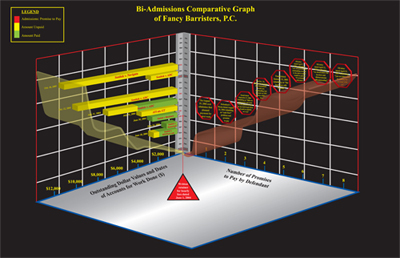
|
Demonstrative Advocacy is a key to our Court Room Methodology. You can review Mr. Fancy's book entitled "Demonstrative Advocacy: Understanding and Constraining Partiality in Adjudication" at www.demonstrativeadvocacy.com. The book examplifies our efforts to improve the administration of justice in Canada, the U.S. and other "Rule of Law" jurisdictions. The following is a brief description of Demonstrative Advocacy and its application to past legal proceedings in which we were counsel of record:
Over two thousand years ago Aristotle opined that "[t]he rule of law is better than that of any individual." Today, the Rule of Law is the cornerstone to all democracies. It is a fundamental concept in both the U.S. Bill of Rights and the Canadian Charter of Rights and Freedoms. Essential to the Rule of Law is the concept that we are a government of laws rather than a government of people. Therefore, the Rule of Law calls for the supremacy of law over human discretion. For example, a judge cannot apply his or her personal beliefs to a case. Adjudication must be based on pre-fixed substantive and procedural laws, without personal beliefs, to create predictability, transparency, and ultimately, fairness of the decision.
|
Demonstrative Advocacy: Complex Tort Case |

|
In both the U.S. and Canada our legal procedure demands evidence, before laws are applied and a case adjudicated in Court, Arbitration or Mediation. That evidence, whether oral or written, is primarily, if not exclusively, text based. However, the disciplines of Neuroscience, Cognitive Psychology, Meta-mathematics and Linguistics teaches us that the oral and written words of any language carry no meaning whatsoever, let alone a fixed meaning. The words in the evidence are given meaning through interpretation by the judge, jury or any trier of fact based on each person's subjective education and experiences. Moreover, such personal biases are largely if not entirely unknown to the litigants. Justice is blind, but not to its own subjectivities.
To constrain such discretion, however unintentional, within the evidentiary semantic network requires counsel to submit to the Court the true meaning of the textual evidence and the properties of the true patterns in the evidence. True, not for the judge, or jury but for the witnesses. True meaning arises from integrating the textual evidence with relevant iconic and indexical evidence, based on specific tested purposes and techniques, to materially limit subjective interpretation. Unlike words iconic / indexical evidence have a direct connection with reality. Therefore, the results resist biased interpretations, and enhance transparency, (plus predictability).
The foregoing is the essence of Demonstrative Advocacy, which operates as a substantial bulwark for the Rule of Law. Over the last 70 years Courts in both the U.S. and Canada struggled to determine admissibility of demonstrative evidence. Subject to relevancy, the focus was on conducting a balancing act between the probative value of the demonstrative evidence and the unfair prejudice. However, Demonstrative Advocacy shows that the real unfairness arises from inadmissibility because the result is an attack on the root of the judicial system: the Rule of Law.
Demonstrative Advocacy: Illustrative Evidence
We visually define critical textual evidence with illustrations and graphs to accurately communicate your story, constrain subjectivity, reduce
acrimony, and expedite resolution.
See how we use "critical text" and "illustrative evidence" below:

|

|
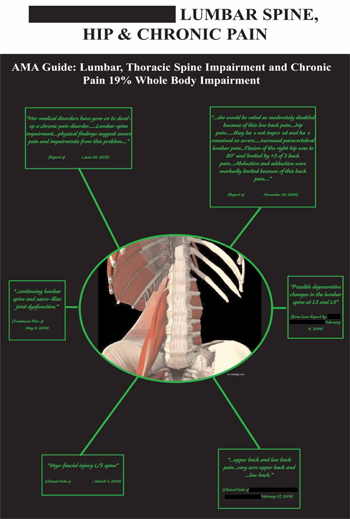
|
|
Demonstrative Advocacy: Real Evidence
We visually define critical textual evidence with real evidence (diagnostic images, injury photos, vehicle photos, location photos, etc.) to accurately communicate your story, constrain subjectivity, reduce acrimony, and expedite resolution. See how we use "critical text" and "real evidence" below:
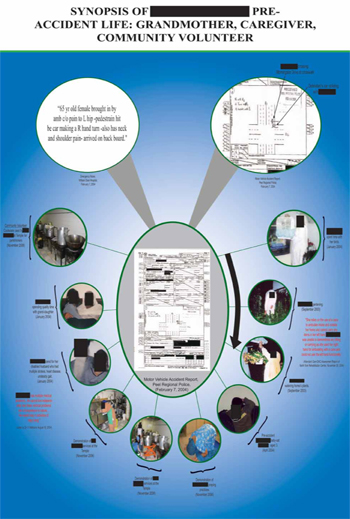
|
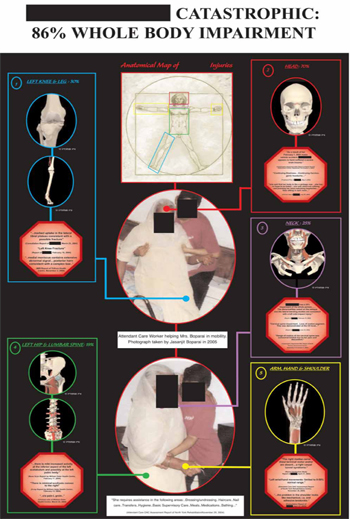
|
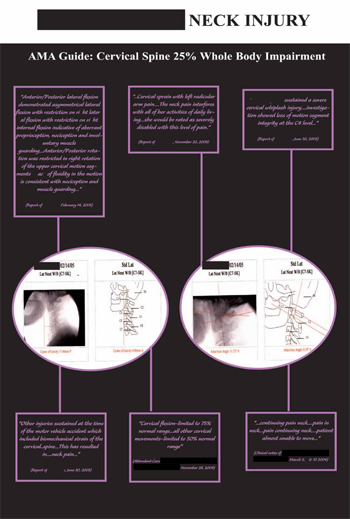
|
|
We have a great team of expert doctors, engineers, information designers, demonstrative theorists, and accountants whom we hire to assist us in ensuring success for you!










